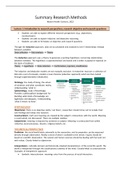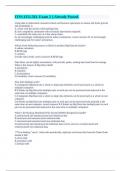Summary
Research Methods FULL summary! (Health Sciences VU)
- Course
- Institution
- Book
This summary contains all the important subjects that are required for the exam. The chapters of Grey (Doing Research in the Real World) are summarized, as well as the lectures (1-12) and the videos and other materials that were on canvas.
[Show more]





